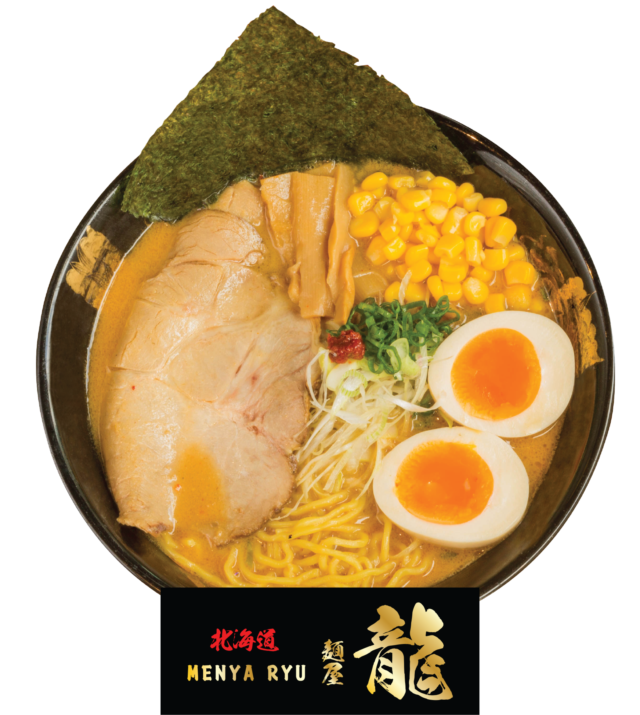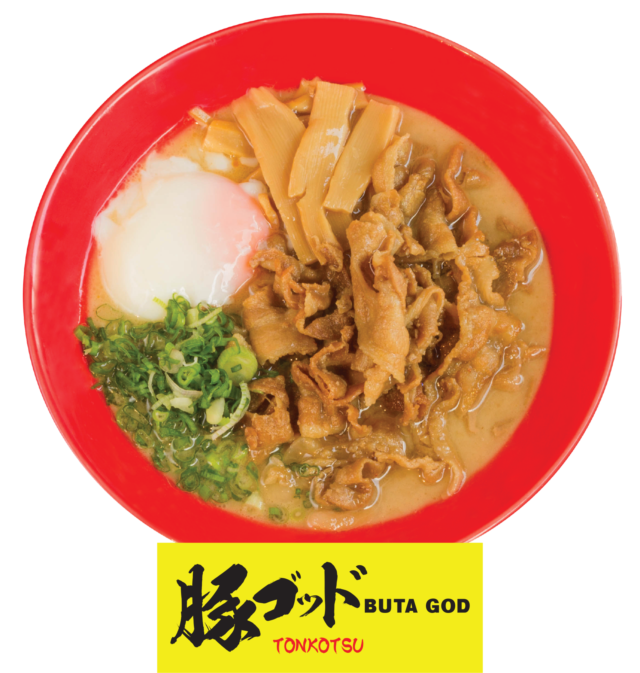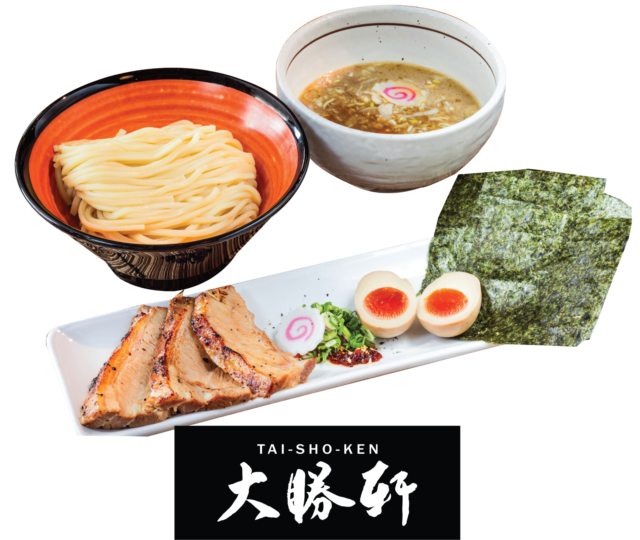
The uniqueness of Tonkotsu Ikkyu ramen is its generous toppings of cha shu made using pork collar cooked in the western sous vide style and that the soup base that comes in four vibrant colors and flavors. The colors of the ramen are achieved from the other natural ingredients that are added to the original tonkotsu soup base–which is tonkotsu broth with a small amount of chili paste to give it a lift. The colours and flavours of the ramen are: White – original tonkotsu, Red – chilli, Green – spinach, and Black – black garlic oil. Ikkyu’s tonkotsu ramen beat five other ramen brands to emerge winner in ‘Ramen Champion’s Tasting Competition 2015′, an excellent indication that his East-meets-west pork cooked sous vide style together with the well-balanced creamy tonkotsu broth is what people love and look for in a delicious bowl of ramen.

Menya Ryu specializes in Sapporo style miso based ramen. Of the three core flavoring elements used for ramen broth in Japan – ‘Shio, Shoyu , and Miso’, miso is of the youngest generation. Miso ramen first made its appearance in the 1960s in Japan’s northernmost prefecture, Hokkaido. The hearty miso based soup is very well received in the cold weather of the city. Hence, locals started adding miso into their broth, creating the style commonly known as Sapporo ramen.
The flavorsome broth of Menya Ryu’s award-winning Sapporo Miso Ramen is simmered over ten hours with three kinds of homemade miso – black, red and white, together with large amounts of pork bones giving it a more layered dimension. This bowl is topped with thinly sliced pork collar cha shu, seasoned soft boiled egg, corn, bamboo shoot, spring onion and a pinch of chili paste. Following the traditional form, the yellow noodles used are of medium thickness, curly and slightly chewy. The variety of flavors and textures within this bowl makes up the definition of Umami.

Buta God have came in champion of the Ultimate Ramen Champion competition for five years since its first win in 2013 despite its unconventional ramen style.
A specialist in sukuyaki pork ramen, Buta God’s chef matches sliced marinated pork belly and poached egg to create the perfect combination of the slightly sweet Tonkotsu broth. The highlight of Buta God’s ramen is its broth. Unlike other contenders that accentuate on heavy and strong flavored broth, Buta God’s broth is made lighter and more refreshing so that guests can enjoy their bowl of ramen without feeling that the broth is too overpowering.

If ramen is perfect for cool, rainy weathers, tsukemen is the best choice for hot summer weather in Singapore. Tsukemen is served with noodles separated from the piping hot dipping soup. This way the noodles will be easier to devour and at the same time maintain the noodles texture throughout your meal. To enjoy your tsukemen, simply take a mouthful of noodles then dip it into the soup. It is a fun twist from ramen and is a popular ramen style in Japan.
Taishoken’s tsukemen soup is made with long hours of preparation including 15 hours of boiling over high heat and constant stirring. The broth is then filtered & cooled using a container placed in an ice bath, then placed in the fridge 1 full day to bring out the umami in the broth.

Launched in 2017, Don Meijin is a donburi specialist that offers an extensive line up of rice bowls from Tendon to Katsu Don, Shogayaki Don to Unagi Don. This is the place to fix your hankerings for Japanese rice bowls.
Don Meijin’s signature is its voluminous rice bowls prepared using premium quality ingredients with homemade sauces. All rice bowls are served with a bed of short grain Japanese rice that are specially imported from Hokkaido. The rice when cooked glistens and boasts a consistent al dente quality.
